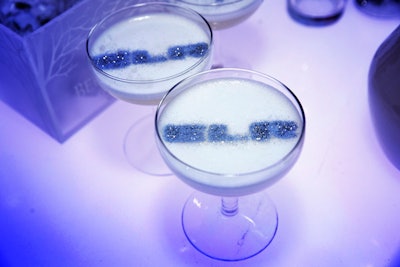
For the Toronto launch party for Cadillac's 2014 ELC electric car, guests could sip a futuristic drink: a cocktail with the car's logo stenciled atop in silver edible dust.
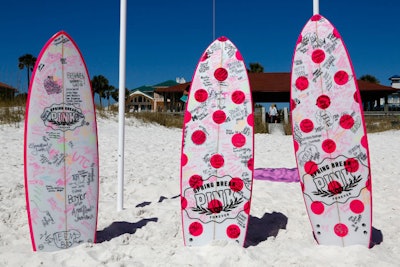
At Victoria’s Secret Pink spring break event in Destin, Florida, in March 2014, the retailer placed its event logo on custom surfboards that guests could sign.
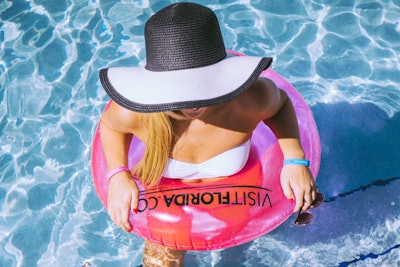
Having a pool party? Make sure inflatable pool toys reinforce the brand message. At the iHeartRadio Pool Party in June, sponsor Visit Florida had its logo on an inner tube and other inflatables used at Miami Beach's Fontainebleau hotel.
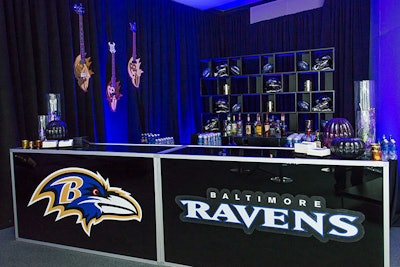
To kick off the 2013 N.F.L. season, the league hosted a free outdoor concert by Keith Urban and a V.I.P. party in Baltimore. In keeping with the music theme, producers PEDG and Production Glue placed guitars with the Baltimore Ravens logos behind the bars at the Maryland Science Center.
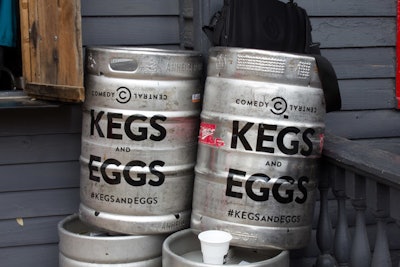
Comedy Central hosted a Kegs and Eggs brunch at South by Southwest in Austin, Texas, in March. Kegs bearing the event logo and hashtag severed both decor and functional purposes, even serving as the base of a DJ booth.
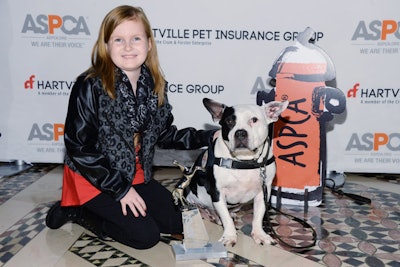
Adding humor to the step-and-repeat at the A.S.P.C.A. Humane Awards luncheon in November was a freestanding, hand-drawn fire hydrant with the animal welfare organization's logo on it. The event, held at Cipriani 42nd Street in New York, honors animals as well as people who advocate for them.
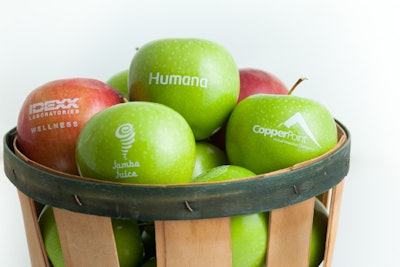
Hard-surfaced fruit makes for a healthy snack—and an unexpected place for a brand logo. Fun to Eat Fruit creates the logos using safe-to-eat, custom images without bruising or puncturing the skin.
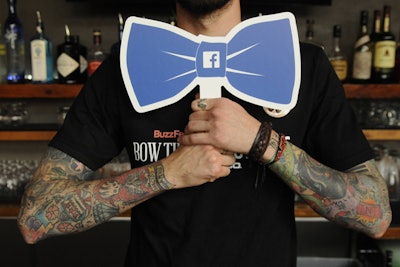
Facebook and BuzzFeed hosted the Bow Ties & Burgers event during the White House Correspondents' Association Dinner in Washington in May. Photo booth props included oversize bow ties in Faceook's signature blue hue with the logo as the knot. Pen & Public produced the event.
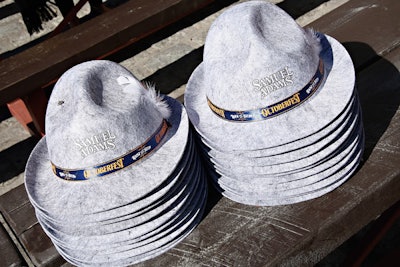
At an Oktoberfest-theme event during the New York City Wine & Food Festival in October, beer brand Samuel Adams affixed its logo to traditional Bavarian hats.
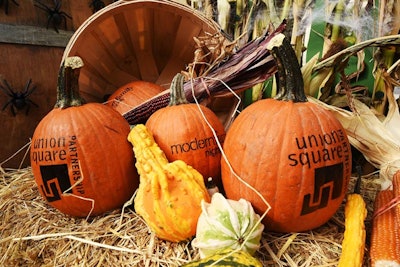
The logos for the TV show Modern Family as well as the Union Square partnership were printed on pumpkins at an October event in New York's Union Square dubbed Modern Family Fall for All. Fox 5 hosted the activation to promote its syndication of the hit ABC sitcom.
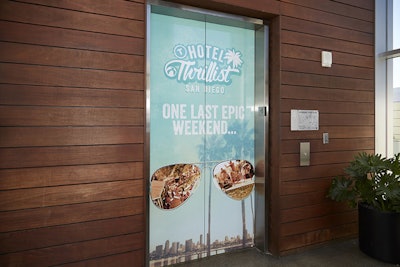
At an event called Hotel Thrillist, Thrillist took over an entire San Diego hotel for a weekend in September. The rebranding included elevator wrapping with the event's logo.
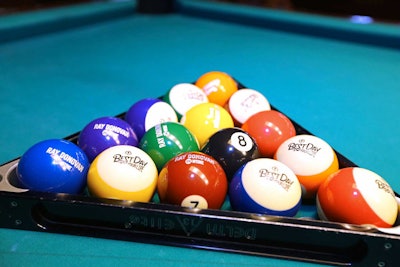
For a summer event called "Best Day of Your Life" in New York, Thrillist used logos on a number of items to encourage the 800 guests to promote the event on social media. Pool balls featured the event logo as well as branding for the Showtime drama Ray Donovan.
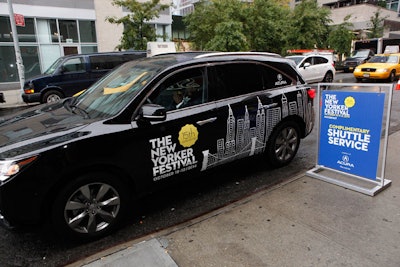
Sponsor Acura provided vehicles to transport people between event venues at the New Yorker Festival in October. Festivalgoers and guests alike knew which vehicles to look for: the ones with the festival's logo emblazoned on the side of the car.
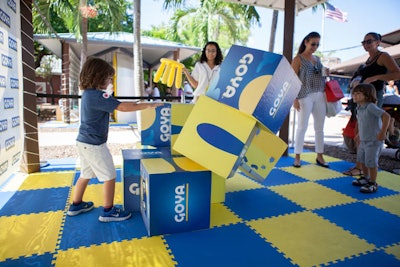
At the event Fun and Fit as a Family at the 2014 South Beach Wine & Food Festival, kids could stack oversize blocks that had images such as sponsor Goya's logo, a fork, and a cartoon mascot for the brand.
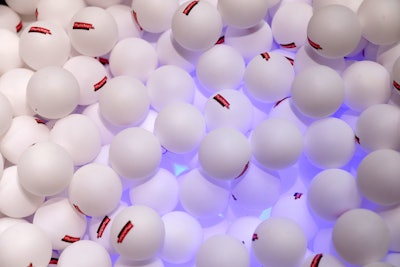
The nighttime party Best of the Munchies: People's Choice Food Awards at the South Beach Wine & Food Festival had a carnival theme with a ring toss, tic-tac-toe, and other games. Planners put the event logo on ping-pong balls.
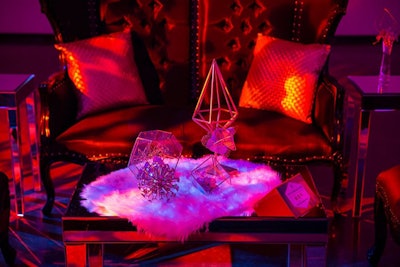
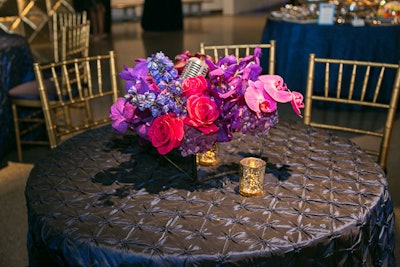
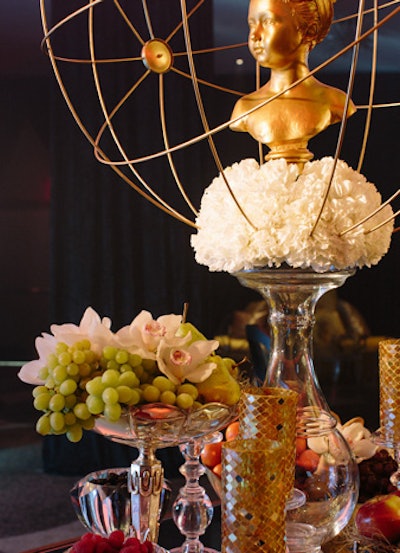
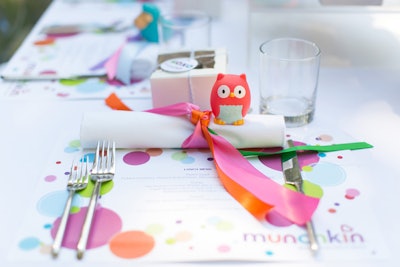
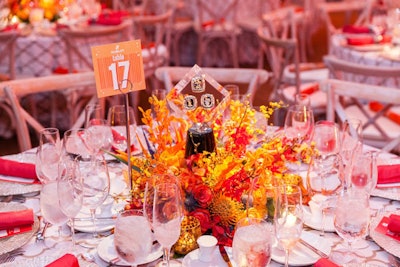
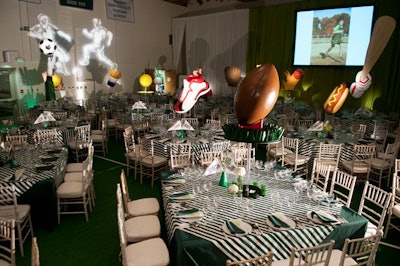
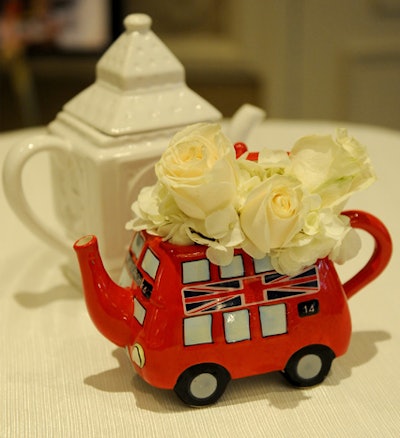
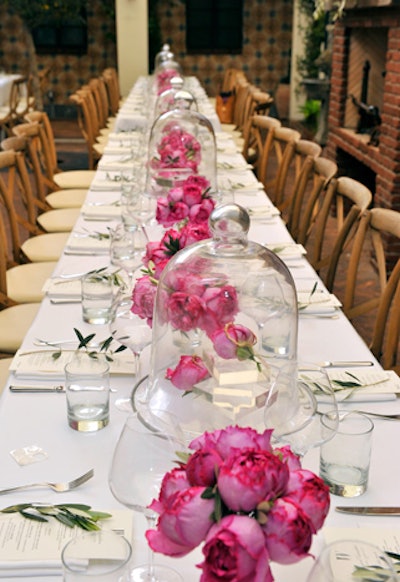
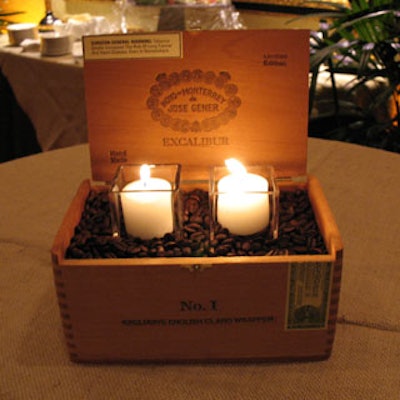

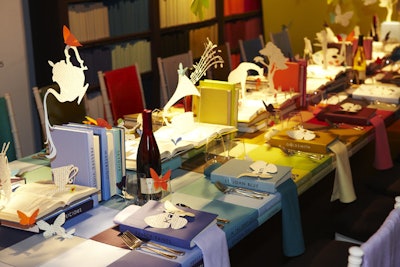

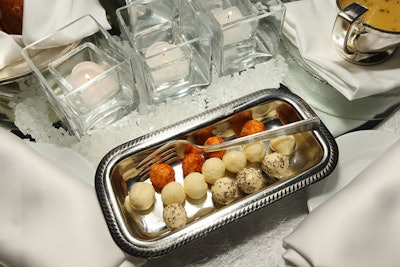
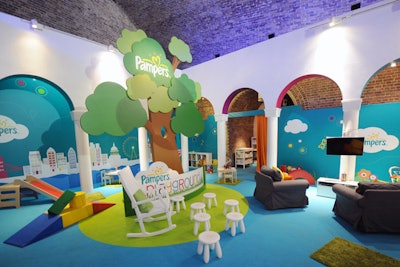
Content creation, in the form of photos, videos, or other material culled from live events and meant for sharing on YouTube, social media, or elsewhere, has been increasingly important to sponsors. All parties involved are now asking far more evolved questions about not just how to create it, but how to create truly great material that people will actually want to watch.
“There’s so much out there, so the [goal] becomes how to curate what is good versus bad. What are sponsors going to be able to actually use and gain traction on?” says Alan Miller, co-publisher of Filter and co-owner of Filter Creative Group. “A car company or a fashion advertiser might want to sponsor [our event], so they’ll expect a sizzle reel will go up on our site and millions of people will want to watch, but that doesn’t automatically happen. It needs to be compelling.”
Talk about a compelling idea that got wide traction: Procter & Gamble took to the London Olympics for a mom-focused campaign with an activation in the form of a 65,000-square-foot “home away from home” for the mothers of competing athletes (pictured). Its related global “Thank You, Mom” campaign celebrated mothers of athletes through ads run online, in print, on TV, and through social media. And a short film called Best Job was released on YouTube 100 days before the official start of the games, as was a “Thank You, Mom” app, which let consumers thank their moms by uploading videos, photos, or text-based messages to a dedicated Facebook page.
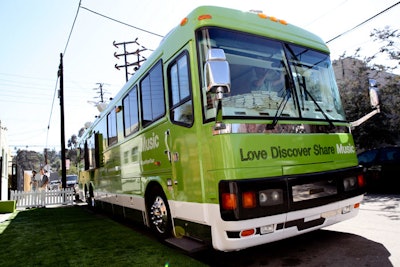
Sponsors know that content is more valuable the more people it reaches in the digital space. So the goal is to work with the best strategic partners to distribute it as broadly as possible—far beyond one brand’s own established audience. Sponsors want to reach the audiences of multiple, carefully considered partners as well.
For example, Filter produced a national bus tour for client Spotify (pictured), with content created at every stop. Near San Diego, the indie band Tegan and Sara played an intimate set for about 30 fans on the bus. The value of that set was amplified exponentially: In addition to using Spotify’s channel, partner Yahoo exclusively debuted the content. “We need partners to elevate our content,” Miller says. “If you pick a smart partner, you’re able to leverage distribution channels and get the content seen. Do your due diligence, taking those negotiations to the next step.”
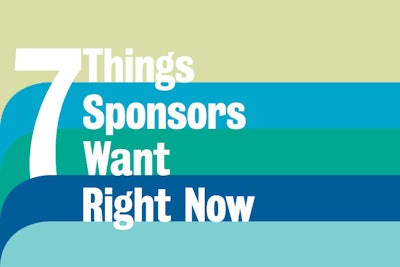
It might sound basic, but wireless Internet access is still not universally available, and sponsors want it badly. On-site social media needs to be able to flow and allow for instant response—“especially when it comes to surveys, contest fulfillment, and live-streaming from events,” says Angel City Designs’ Mark Yumkas, based on his team’s experience with recent events like the Battle 4 Atlantis college basketball tournament over Thanksgiving in the Bahamas. “Accessible, free, secure, high-bandwidth Wi-Fi is the backbone for all other applications,” Yumkas says. “You can design and activate all the compelling online social media activations you could possibly imagine, but if your guests or patrons cannot access the information in a timely fashion—or the sponsor cannot deliver all of the information that is created—then the content can be devalued from a performance and impression standpoint.”

It’s not new that sponsors want to align with nonprofits, but the importance of pairing up with great causes is more important than ever for brands, especially in light of recent, widely witnessed tragedies like the damage wrought by Hurricane Sandy. Brands are seeking out nonprofits that fit with their visions for corporate responsibility and developing partnerships that go well beyond the hours of the live event.
Jennifer Howell, founder of arts nonprofit Art of Elysium, says sponsors have been reaching out to her group “all the time” versus the more traditional other-way-around route of event hosts courting sponsors. She indicates that she’s seeing charities trying to accomplish their marketing and philanthropic goals in one fell swoop by blurring the line between those previously separate budgets.
She described a recent partnership in which beauty product delivery company Birchbox sponsored a couple of the charity’s events, setting up a bar (pictured) where people could come and fill their own boxes with products of their choice. Some of the charity’s supporters built their boxes, took photos, and gave quotes that were used for an online promotion that focused on the charity’s work as well as the holiday product collection.
Birchbox then put the organization’s logo and mission on its boxes, which were distributed to all of its shoppers in November, as part of a holiday giving campaign. “This helps us greatly to reach a new audience with our mission,” Howell says, while also acknowledging the benefit to Birchbox’s bottom line at a time when its consumers are eager for feel-good stories.
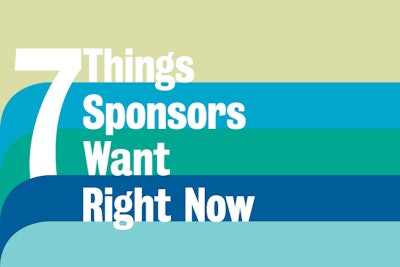
When sponsors shell out dollars, they want to know they’re buying unique access to distribute event content. Guerrilla or other piggyback event marketing—not to mention anyone on site with a smartphone—can diminish that value. Sponsors these days want to limit that.
“We are seeing, especially at larger, higher-profile events such as the Super Bowl, Oscars, etc., there is an ever-increasing number of ambush marketers that surround these events. They are not paying any sponsorship fees yet are producing both online and live activations,” Yumkas says. “We have seen everything from our own vendors and their on-site staff texting, tweeting, and posting live from events. I have witnessed using our intellectual property and our client’s intellectual property for their own gain, without permission or approval. Now, we make all vendors and their staff sign an extensive [nondisclosure agreement] that prevents them from doing this. We monitor it constantly and the default, especially with our vendors, as part of the NDA, is forfeiture of fees or partial fees of goods and services provided if we find a violation.”
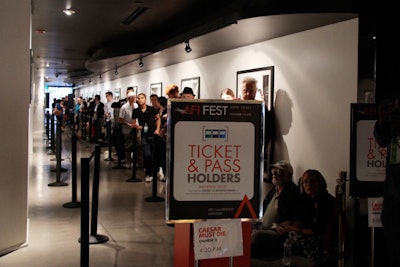
Yes, many sponsors want to align with a select, invite-only crowd of “influencers.” But in the current climate, sponsors—including some elite brands—are also looking for mass-market exposure.
For instance, luxury automaker Audi is the title sponsor of the American Film Institute’s A.F.I. Fest (pictured), which now gives free tickets to consumers. “Access to our audience gives Audi the ability to reach a wide variety of potential customers in a relatively short amount of time,” says festival producer Derek Call. “The festival attracts an audience comprised of both industry professionals and movie lovers from all over the globe, and we generate billions of impressions for them other than just the eyeballs of those guests in attendance. Our guests see what Audi has done for them by giving them a free ticket and by supporting the art of filmmaking. It shows how Audi as a brand is accessible to all different types of potential car buyers, and at the end of the day, Audi needs to sell as many cars as possible."
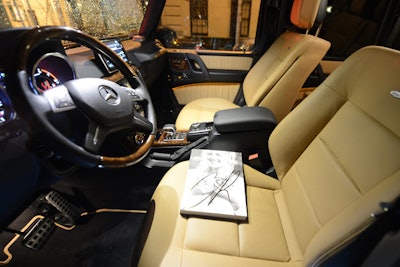
It’s still key for vendors to get attendees interacting with products, not just looking at logos. Sponsors want guests to experience their brand as they would as consumers outside of events in immersive, authentic-feeling sponsorship integrations.
In September, Mercedes-Benz partnered with Carine Roitfeld on the launch of her new magazine, CR Fashion Book, sponsoring the black-tie gala at the Frick Collection in New York. The event offered guests a sneak peek of the magazine from inside the comforts of the brand new G63 AMG, parked outside the museum (pictured). The next day, media could preview advance copies of the magazine in the Mercedes-Benz Star Lounge at Lincoln Center. “Experiential marketing has been a consistent and significant part of our arsenal,” says Mercedes-Benz USA department manager of brand public relations Adam Paige. “It’s an element that is a cornerstone of our activations. Experiential on a physical car level, yes, but also a brand experience—it’s a Mercedes-Benz experience.”
Similarly, last summer Lucky Brand hosted an event at a Malibu beach house with an intimate concert by Regina Spektor, but nary a logo was in sight—part of an effort to avoid heavy-handed marketing to an upmarket audience. In the gift bags, guests received a certificate for a private fitting of a custom denim wardrobe at the brand’s new downtown Los Angeles headquarters. That personalized appointment exposed them to the product and the brand’s culture in a meaningful way.



















